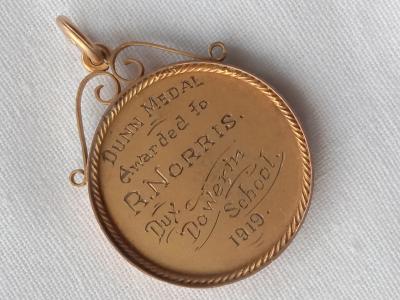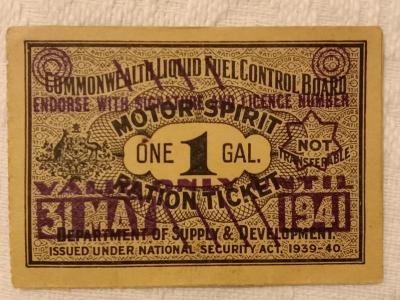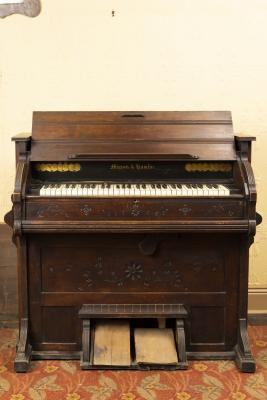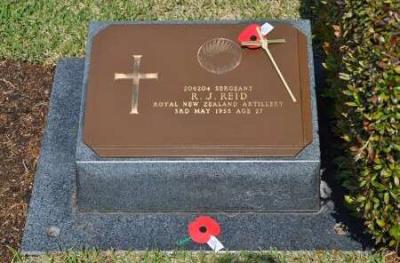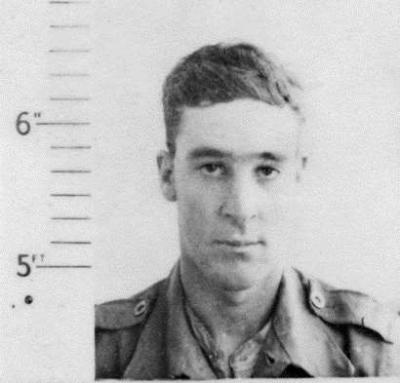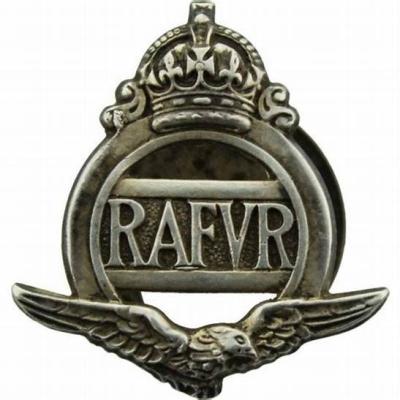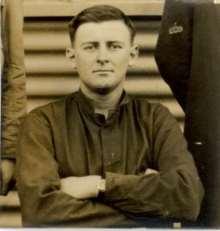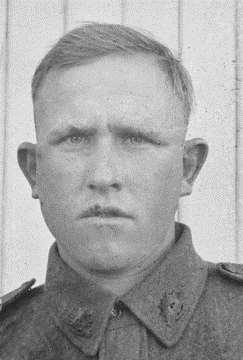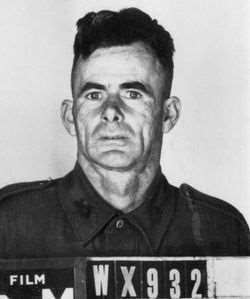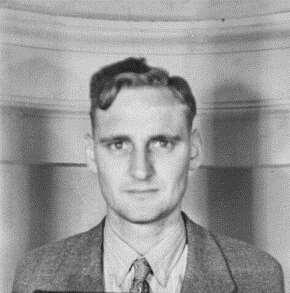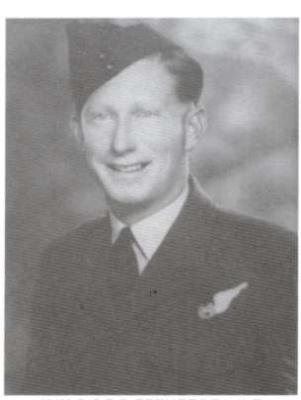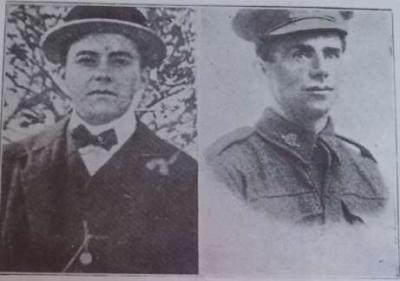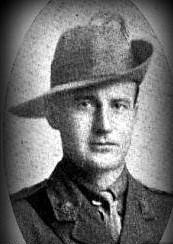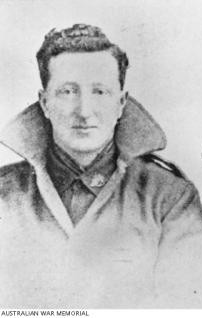Not Forgotten. 4008 Private Leslie Anderson, 32 Battalion AIF, World War 1
Private Leslie Anderson, a farmer, was born in Diapur in Victoria, the son of Margaret Sarah Anderson
and the late Robert Anderson of Dowerin and brother of Joseph Anderson who enlisted in August 1915
and died in France in July 1916. The boys’ father had died in 1900. On 13 April 1916 at the age of 24
Private Anderson enlisted in Perth along with his cousins Clarence and James Anderson and all three
were placed in the 32nd Battalion. Private Leslie Anderson embarked from Fremantle on HMAT A16
Port Melbourne on 28 October 1916, again with Clarence and James Anderson, arriving in England on 28
December. Between 27 February and early March 1917 Private Leslie Anderson was suffering from
mumps in Fovant Military Hospital in Hurdcott, England. Hurdcott Camp near the village of Fovant in
Salisbury was taken over by the A.I.F. and a series of military badges was carved into the chalk hillside.
Private Anderson proceeded to France on 27 March 1917 and was taken on strength with the 32nd
Battalion on 5 April 1917, part of the 8th Brigade. The 8th Brigade joined the newly raised 5th
Australian Division in Egypt, and proceeded to France, destined for the Western Front, in June 1916. The
32nd Battalion fought its first major battle at Fromelles on 19 July 1916 where it lost close to 90 per cent
of its fighting strength. In early 1917, the German Army withdrew to the Hindenburg Line allowing the
British front to be advanced and the 32nd Battalion participated in the follow-up operations. The
battalion subsequently missed the heavy fighting to breach the Hindenburg Line during the second
battle of Bullecourt as the 8th Brigade was deployed to protect the division’s flank. The only large battle
in 1917 in which the 32nd Battalion played a major role was Polygon Wood, fought in the Ypres sector in
Belgium on 26 September.
Between 7 and 28 March 1918 Leslie Anderson was on leave in England. Back in France he was on night
patrol on 14 April 1918 and, according to Pte. Andrews who was there, Leslie Anderson was shot in the
chest above the heart by one of their listening posts. He walked back to the line and was taken to the
Dressing Station. Andrews reported that Leslie Anderson was cheerful and no-one thought he would
die, but Private Anderson was transferred to the 41st Casualty Clearing Station. He died of his wounds
on 16 April 1918 and was buried at Namps-au-Val British Cemetery, 11 miles south west of Amiens.
Mrs. Margaret Anderson requested the following words be placed on his headstone: “He gave his life for
his country; He fought a noble fight”.
Private Anderson was awarded the British War Medal and the Victory Medal.
Details
Details
When the Great War broke out in Europe in 1914, Dowerin was an isolated farming district, several days travel by horse or by coach from Perth. Over the succeeding four years at least 176 men and one nurse served in the armed forces of the Empire. The names of the men who served can be read on the Honour Roll in the Dowerin Town Hall or can be accessed on the museum section of the Shire of Dowerin website.
Fifty-one men from the district died in the Great War and their names are inscribed on the Dowerin War Memorial which was unveiled on ANZAC Day 1936. Subsequent conflicts have seen more names memorialised and each ANZAC Day their sacrifice is honoured and remembered by the community.
For some years Diane Hatwell had been intrigued by the names on the Dowerin War Memorial. Some were familiar with the families still in the district but some not so. Diane felt It was important for the community that when we said each ANZAC Day “We will remember them”, we had some idea of who and what we are remembering. She set about, to find out who they were, what they were doing in the Dowerin district, and where and how they died. These pages presented through Collections WA represent the current state of this ongoing research and community response.
Open in Google Maps
Nearest geotagged records:
Other items by Dowerin District Museum
Other items from Dowerin District Museum
- Fuel ration card
- Mary Couper's pedal organ
- Not Forgotten, 206204 Sergeant Reginald James REID MM, 16 New Zealand Field Regiment, Korea
- Not Forgotten, WX1893 Private Angus Frank WINDSOR, 2/11 Battalion AIF, World War 2
- Not Forgotten, 117114 Flying Officer Vernon Hopetoun SMITH, Royal Air Force Volunteer Reserve, World War 2
- Not Forgotten, 427933 Flight Sergeant Geoffrey Goodhand PARKER, 104 Squadron, Royal Australian Air Force, World War 2
- Not Forgotten, WX15945 Driver Alick William HARRIS,139 General Transport Company, Australian Army Service Corps AIF, World War 2
- Not Forgotten, WX932 Private Sydney Frederick GANGELL, 2/11 Infantry Battalion AIF, World War 2
- Not Forgotten, 121945 Aircraftman Class 1 Philip ETHERTON, Royal Australian Air Force, World War 2
- Not Forgotten, 38423 Pilot Officer Peter Colin EDWARDS, Royal Australian Air Force, World War 2
- Not Forgotten, 3229 Private Arthur WERNDLY, 46 Battalion AIF, and 4090 Frederick Owen WERNDLY, 32 Battalion AIF, World War 1
- Not Forgotten, 64 Lieutenant Frank Eric THROSSELL, 10 Light Horse, World War 1
